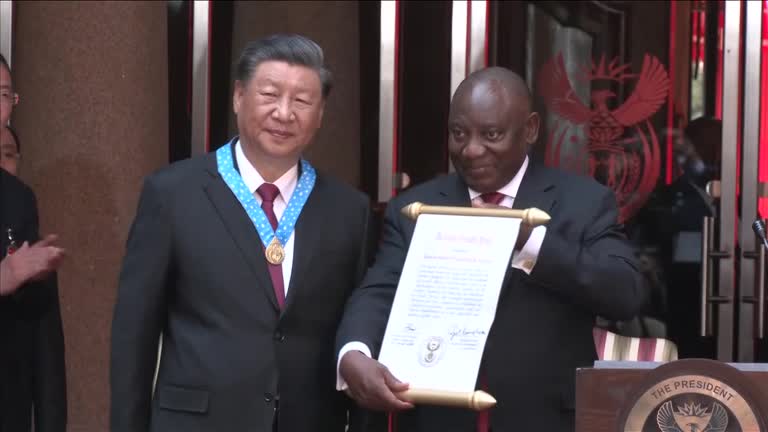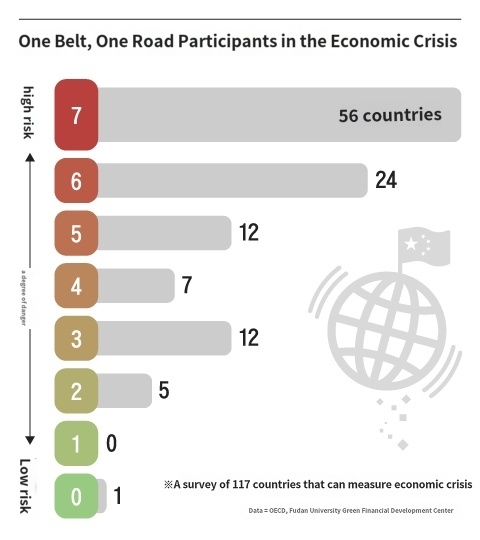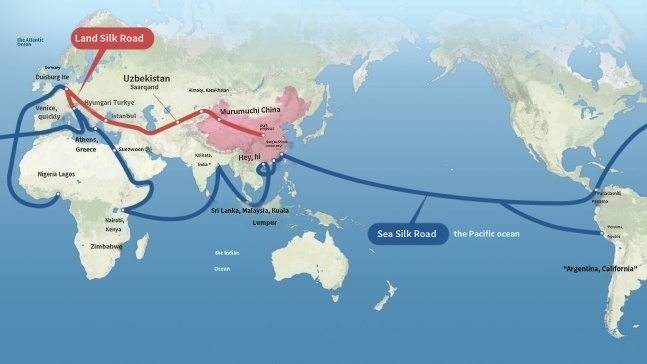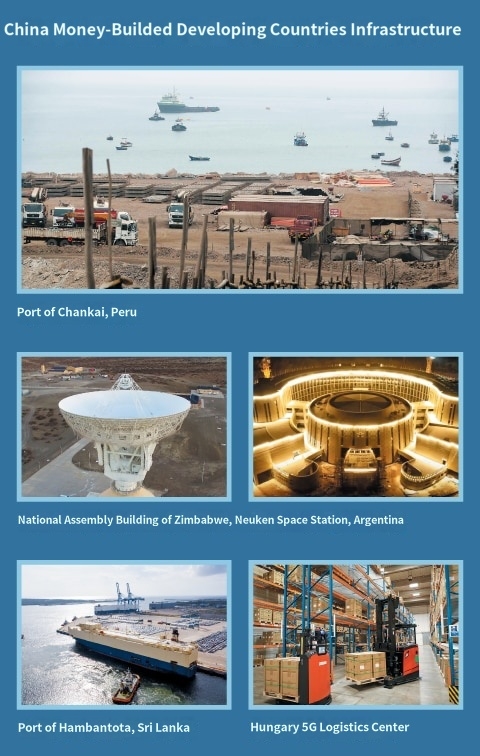
Chinese President Xi Jinping’s project to expand global economic and military territory, “One Belt, One Road and Maritime Silk Road,” marks its 10th anniversary on the 7th. China is conducting a large-scale public relations campaign by holding a “one-on-one International Cooperation Summit Forum” in Beijing on the 17th of next month to expand one-on-one to the next level. Leaders of more than 30 countries, including Russian President Vladimir Putin, will participate.Three years after China overtook Japan as the world’s second-largest economy in 2010, it declared a one-on-one and challenged “Pax Americana (U.S. hegemony).” It was a surprise announcement six months after President Xi Jinping took office. Over the next 10 years, the number of participating countries increased to 152. According to a report by the Center for Green Financial Development at Fudan University in Shanghai, China’s cumulative investment in One Belt, One Road (as of 2022) amounts to $962 billion.

China’s one-on-one harvest has grown its influence in developing countries such as Central Asia and Africa. It expanded its base by leading the construction of large-scale infrastructure, including the Karot Hydroelectric Power Plant in Pakistan (completed in 2022) and the Hambantota Port in Sri Lanka (four stages of construction scheduled to be completed next year).
On the other hand, the shadow of “China Money” is also deepening. A growing number of countries are on the verge of bankruptcy because they cannot afford high interest rates after accepting Chinese investment as a “gift.” China usually applies an annual interest rate of 5% to funds paid in the name of one-on-one, which is about twice that of the International Monetary Fund (IMF). According to the U.S. Global Development Center (CGD), 23 of the participating countries in the Belt and Road Initiative are on the verge of bankruptcy due to the burden of repaying high-interest debt to China.There are also warnings that the next decade of One Belt and One Road may lead to military expansion. The U.S. think tank, the Democratic Protection Foundation, said in a report on the 2nd, “China is using one-on-one as the basis for military buildup by lending astronomical funds, building infrastructure, and converting ports into military bases if they fail to pay back their debts.”The Belt and Road Initiative aims to absorb China’s “under the chin” of Latin America across the sea, starting with Southeast Asia and Central Asia, west of China, as well as Africa and Europe as land railways and maritime ports. While the evaluation of China has turned negative among the people of Western countries, including the U.S., where China’s desire for hegemony is embarrassing, more and more people are evaluating China favorably in countries that have benefited from one-on-one. According to a Pew Research survey released in July, only 23% and 15% of countries, including Kenya and Nigeria, said they were “negative” about China. In contrast, 83 percent in the United States and 77 percent in Korea were negative.Some analysts say that the reason why One Belt and One Road was able to pioneer the “gap market” of developing countries is because it dug into the limitations of “Pax Americana.” The large-scale U.S. military presence in East Asia after World War II has drawn criticism, but many say it has led to explosive economic growth by acting as a “shield” to prevent South Korea, Japan, and Taiwan from hostile countries such as North Korea and China. However, there are many countries that have been affected by Pax Americana, such as Latin American countries. In the 1980s, when foreign debt crises hit these regions, the United States forcibly transplanted neoliberal policies using the IMF and the World Bank as leverage. Mexico, Chile, and Argentina suffered severe side effects such as polarization, job insecurity, and energy supply shortages in the process of forced privatization and market opening, weakening their national power. It is said that developing countries, which saw this example, welcomed one-on-one Chinese funds under the slogan of “non-interference in internal affairs.

“African countries with a lot of dictatorship and corruption have also actively joined the Belt and Road Initiative for similar reasons. There are 37 countries (out of 55 countries) participating in Africa’s Belt and Road Initiative. China’s first overseas military base was built in Djibouti, East Africa (2017). The New York Times said, “As of 2021, China’s overseas loans account for 60% of the IMF,” adding, “China is encroaching on the U.S. ‘Lender of Last Resort’ status in the international community.”Ten years of light and shadow are mixed one-on-one. Saudi Arabia, which has benefited from technological cooperation and not relying on direct funding from China, is considered a representative beneficiary. Russia, Kazakhstan, and Brazil, which are relatively large in size, have also become one-on-one winners by attracting more than $1 billion (about 1.32 trillion won) in large-scale infrastructure construction projects from China.Zambia, on the other hand, borrowed $6.6 billion from China’s state-owned banks and failed to pay it back, leading to state bankruptcy in 2020. Sri Lanka forcibly handed over 80% of its stake in Hambantota port to China in 2017 after failing to pay back its debts. Djibouti’s external debt, which China included as a base for its entry into Africa, was 50% of China’s gross domestic product (GDP) in 2016, in the early days of its investment, soaring to 85% two years later, putting it on the verge of bankruptcy. Seventy percent were owed to China. In July, U.S. President Joe Biden criticized One Belt, One Road as a “debt and take away business.”Amid mixed light and shade on the one-on-one road, the Chinese leadership plans to take the one-on-one road to the next level on the occasion of its 10th anniversary.

Chinese Foreign Minister Wang Yi said on the 1st, “We are ready to seek the construction of a high-quality one-on-one road at a new starting point.” China’s next goal is to wield international influence gained through one-on-one for its own interests. It is expected to raise its voice in the international community as a spokesman for developing countries (U.S. Diplomat) and secure military bases and supply bases in each country (U.S. Laboratory Democracy Protection Foundation) and confront the U.S. by establishing a new transportation network and supply chain.
China’s external expansion policy first presented by Chinese President Xi Jinping during a lecture at Kazakhstan’s Nazarbayev University on September 7, 2013. The plan is to pioneer a new land and sea Silk Road in the 21st century that connects Southeast Asia, Central Asia, Africa, and Europe, which is west of China. With “China Money” at the forefront, it is fighting against the U.S.-centered global order by laying infrastructure and securing de facto military bases and supply bases in developing countries beyond the reach of the U.S.
EJ SONG
US ASIA JOURNAL

